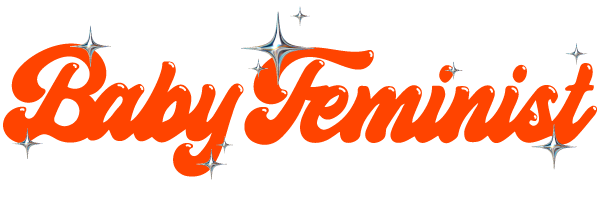If Your Feminism Isn’t Intersectional, It Isn’t Real Feminism
You may have heard the slogan, “if your feminism isn’t intersectional, it’s bullshit” before. It comes from a 2011 essay by feminist writer, Flavia Dzodan titled ‘My feminism will be intersectional or it will be bullshit’, which focused on the ways that feminism considers – or often fails to consider – issues outside of gender equality.
Since the dawn of feminism (generally agreed to be around the late 1800s), the movement has been criticised for shutting out the voices of women from minority communities and instead focusing on issues faced by white, middle-class women in Western societies. For that reason, intersectional feminism is a critical concept, but it can also be confusing and politically contentious. While the term is frequently used in feminist dialogue, its meaning and aims can often become lost.
AdvertisementADVERTISEMENT
So, what is intersectional feminism?
The term ‘intersectionality’ was first coined in the late 1980s by feminist activist, Professor Kimberlé Crenshaw, which she used it to describe the compounded discrimination of being both Black and a woman. As a legal scholar, Crenshaw used the term to critique anti-discrimination laws, citing cases where women had been forced to pursue claims of racism or sexism without being able to describe the intersection of the two.
However, even though Crenshaw is credited with coining the term, the idea of intersectionality and recognition that equality is not created equal had been floating around for a while before this. Black feminist literature produced in the 70s was already highlighting the inequality that affected Black women, as a result of both sexism and racism.
At its core, intersectionality refers to the ways that different aspects of a person’s identity can expose them to overlapping forms of discrimination and marginalisation. Intersectionality acknowledges that aspects such as gender, sex, sexual orientation, ethnicity, colour, nationality, ability, refugee or asylum seeker status, migration or visa status, language, mental health, age, socioeconomic status, housing status, and criminal record, can all contribute to a person’s experience in the world and the inequality, exclusion, or discrimination they may experience.
So, intersectional feminism specifically recognises both that different aspects of a woman’s identity can increase her vulnerability to discrimination and that one-size-fits-all solutions aren’t always effective.
@refinery29au Welcome to Baby Feminist, a series that breaks down the fundamentals of feminism. This week, we’re looking at intersectional feminism and how it tackles oppression on multiple fronts. #feminism #womensrights #feminist #educational #smartwomen #intersectionality #intersectionalfeminism ♬ original sound - Refinery29 Australia
Why does feminism need to be intersectional?
Feminism has historically failed to acknowledge women from minority groups. Starting with first wave feminism, the suffrage movement frequently barred women of colour from protesting alongside white women and they had the single-minded pursuit of securing the vote for white women. In the US, Black women did not get their voting rights ensured until the mid-1960s, while the women’s suffrage movement secured the vote for white women in 1920.
AdvertisementADVERTISEMENT
Later, as second wave feminism took hold through the 1960s and 70s, Black women and other women of colour, as well as LGBTQIA+ women, continued to struggle with the fact that mainstream feminism was routinely shutting out their voices. Many leaders of feminist organisations explicitly shut out women from these communities. In bell hooks’ landmark 1981 book, ‘Ain’t I a woman?’ she writes that “Although the woman’s movement motivated hundreds of women to write on the woman question, it failed to generate in-depth critical analyses of the black female experience.”
The ongoing failure of feminism to acknowledge women from minority groups is particularly frustrating when you consider that the movement has borrowed heavily from, and run concurrently to, other social and political upheavals such as the abolitionist movement, the Civil Rights Movement, and the Gay Liberation Movement.
Why do we still need intersectional feminism?
There’s a multitude of reasons why feminism still needs to be intersectional today. Many women’s issues impact women from these communities at far greater rates than others. Black women, women of colour, Indigenous women, women living in rural areas, women from lower socioeconomic backgrounds, women living with disabilities, and LGBTQIA+ women experience gender-based violence more than other women. In fact, Australian research has found that 50% of trans people have said they had been sexually assaulted at least once. And women with a disability are about twice as likely as a woman without a disability to report having experienced sexual violence. These aspects of a woman’s identity can also make it more difficult to access the help that they need due to systemic barriers and there is increased risk of social isolation.
AdvertisementADVERTISEMENT
Here in Australia, there is also the growing issue of homelessness among older women, with age, gender, and socioeconomic status all intersecting to create a pervasive problem. From 2011 to 2016, the number of older women experiencing homelessness increased by over 30%, leaving women in extremely vulnerable situations.
The intersectional lens also asks that feminists, particularly those in the Western world, look beyond issues faced by women in the global North and take into account the struggle of women in other countries, including in the global South. The issues facing women on a global scale should be folded into the mainstream feminist movement, including a lack of education for women and girls, housing and labour crises, physical and sexual violence, access to food, health care, and safety.
Ultimately, intersectional feminism captures the idea that feminism is tantamount to human rights. It gives feminism the scope to root out all forms of oppression and provides a framework through which feminist activists and organisations can build inclusive movements that can address multiple forms of discrimination at the same time.
Want more? Get Refinery29 Australia’s best stories delivered to your inbox each week. Sign up here!
AdvertisementADVERTISEMENT







